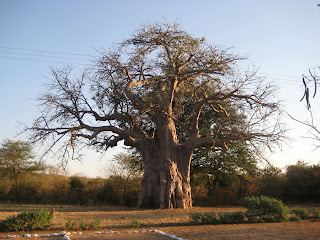A few more pictures chosen at random...

Africans love Uno. Fact.

Fortune and his train. This goofy six-year-old is the child of the girls' caretaker. He's tiny and has quite a gap in-between his two front teeth. They don't get much cuter than this.

The Baobab Tree. It's a monster. It stands on the Namumu complex just outside of the main office. I wish I had a picture with somebody standing beside it so that you could get an idea of how big it actually is. I climbed it once. No big deal. I didn't make it that high, though, because Esther yelled at me and told me that if I didn't come down she'd give me a spanking. Yikes.

I think that paying to use the toilet is a ridiculous concept. I would have pee'd all over this sign if I could have reached it. But hey, I'm no Will Duke...
The blue van, called a "minibus", taxis people from city to city within Zambia. This is how you travel from Lusaka, the capital city, to Siavonga, where you find Namumu. It's tight. It smells. TIA.

Munjongo, Esther and their youngest daughter, Ndandula, kicking back in the living room. Their place is nice. They have a TV (where we watched professional wrestling three nights a week), a DVD player (where we watched professional wrestling videos on the nights when professional wrestling wasn't on TV), and a laptop computer (where we downloaded wrestling clips from the internet so that we could watch professional wrestling when we were somewhere other than the living room. Just kidding. This is where Munjongo does work. Although I'm sure that he would certainly download professional wrestling highlights to his computer if Namumu had a faster internet connection.).

























